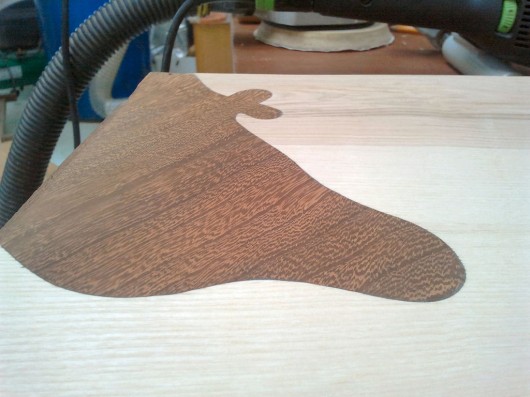Turn a fail into a feature
Posted: October 21st, 2013, by Bongo
We published this step-by-step Instructable a couple of weeks ago, outlining an unusual woodworking technique to splice interesting shaped pieces of contrasting coloured wood. The Instructable editors featured it on their home page and in their newsletter :) and it’s been getting quite a bit of attention (over 55k views in a week). A bit surprising, given it was an unexpected little diversion in the making of a commission that didn’t originally call for anything like that.
It’s one way to make “cut too short” incidents into an interesting feature and Continue reading »
